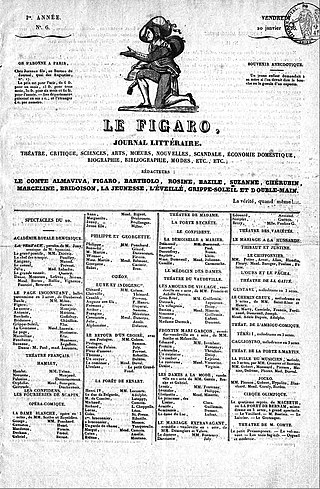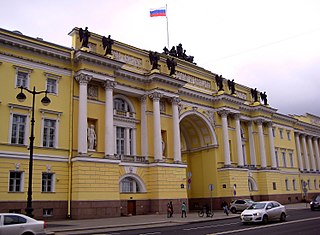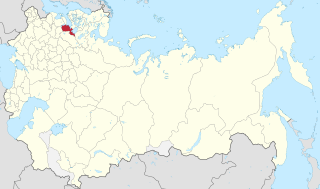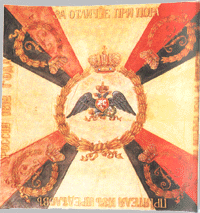
1826 (MDCCCXXVI) was a common year starting on Sunday of the Gregorian calendar and a common year starting on Friday of the Julian calendar, the 1826th year of the Common Era (CE) and Anno Domini (AD) designations, the 826th year of the 2nd millennium, the 26th year of the 19th century, and the 7th year of the 1820s decade. As of the start of 1826, the Gregorian calendar was 12 days ahead of the Julian calendar, which remained in localized use until 1923.

1782 (MDCCLXXXII) was a common year starting on Tuesday of the Gregorian calendar and a common year starting on Saturday of the Julian calendar, the 1782nd year of the Common Era (CE) and Anno Domini (AD) designations, the 782nd year of the 2nd millennium, the 82nd year of the 18th century, and the 3rd year of the 1780s decade. As of the start of 1782, the Gregorian calendar was 11 days ahead of the Julian calendar, which remained in localized use until 1923.

1801 (MDCCCI) was a common year starting on Thursday of the Gregorian calendar and a common year starting on Tuesday of the Julian calendar, the 1801st year of the Common Era (CE) and Anno Domini (AD) designations, the 801st year of the 2nd millennium, the 1st year of the 19th century, and the 2nd year of the 1800s decade. As of the start of 1801, the Gregorian calendar was 12 days ahead of the Julian calendar, which remained in localized use until 1923.

1796 (MDCCXCVI) was a leap year starting on Friday of the Gregorian calendar and a leap year starting on Tuesday of the Julian calendar, the 1796th year of the Common Era (CE) and Anno Domini (AD) designations, the 796th year of the 2nd millennium, the 96th year of the 18th century, and the 7th year of the 1790s decade. As of the start of 1796, the Gregorian calendar was 11 days ahead of the Julian calendar, which remained in localized use until 1923.

1798 (MDCCXCVIII) was a common year starting on Monday of the Gregorian calendar and a common year starting on Friday of the Julian calendar, the 1798th year of the Common Era (CE) and Anno Domini (AD) designations, the 798th year of the 2nd millennium, the 98th year of the 18th century, and the 9th year of the 1790s decade. As of the start of 1798, the Gregorian calendar was 11 days ahead of the Julian calendar, which remained in localized use until 1923.

Southwestern Krai, also known as Kiev General Governorate or Kiev, Podolia, and Volhynia General Governorate was an administrative-territorial and political subdivision of the Russian Empire in 1832–1914. It has a special status established for the gradual political and economical integration and assimilation of the non-Russian population of right-bank Ukraine within the Russian Empire.

From 1711 to 1917, the Governing Senate was the highest legislative, judicial, and executive body subordinate to the Russian emperors. The senate was instituted by Peter the Great to replace the Boyar Duma and lasted until the very end of the Russian Empire. It was chaired by the Procurator General, who served as the link between the sovereign and the Senate; he acted, in the emperor's own words, as "the sovereign's eye".

The Saint Petersburg Governorate was a province (guberniya) of the Russian Empire, with its capital in Saint Petersburg. The governorate was composed of 44,613 square kilometres (17,225 sq mi) of area and 2,112,033 inhabitants. It was bordered by Estonian and Livonian Governorates to the west, Pskov Governorate to the south, Novgorod Governorate to the east, Olonets Governorate to the northeast, and Vyborg Governorate of the Grand Duchy of Finland to the north. The governorate covered most of the areas of modern Leningrad Oblast and Ida-Viru, Jõgeva, Tartu, Põlva, and Võru counties of Estonia.

Grand Duke Mikhail Pavlovich of Russia was a Russian grand duke, the tenth child and fourth son of Paul I of Russia and his second wife, Sophie Dorothea of Württemberg, who took the name Maria Feodorovna. He was the younger brother of two Tsars, Alexander I and Nicholas I, and the disputed Tsar Konstantin I.

Arkhangelsk Governorate was an administrative-territorial unit (guberniya) of the Russian Empire and the Russian SFSR, which existed from 1796 until 1929. Its seat was in Arkhangelsk. The governorate was located in the north of the Russian Empire and bordered Tobolsk Governorate in the east, Vologda Governorate in the south, Olonets Governorate in the southwest, Sweden in the west, and Norway in north-west. In the north, the governorate was limited by the White and Barents Seas.

The Caucasus Viceroyalty was the Russian Empire's administrative and political authority in the Caucasus region exercised through the offices of glavnoupravlyayushchiy and namestnik ("viceroy"), situated in the modern areas of the Russian Federation, Armenia, Azerbaijan and Georgia. These two terms are commonly, but imprecisely, translated into English as viceroy, which is frequently used interchangeably with governor general. More accurately, glavnoupravlyayushchiy is referred to as the High Commissioner of the Caucasus, and namestnik as Viceroy.

Events from the year 1802 in Russia
The following article lists events that happened during the year 1799 in Russia.

Events from the year 1797 in Russia
Events from the year 1804 in Russia
Events from the year 1788 in Russia

The 29th Chernigov Infantry Regiment was an infantry regiment of the Russian Imperial Army.














